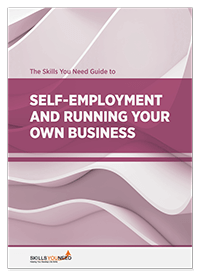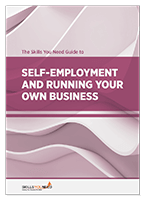Pitching Your Business Idea
See also: What is Franchising?If you have ever watched The Apprentice or Dragons Den, you will know that being able to ‘pitch’ a business idea, or present it to a potential investor, is crucial. The ability to summarise and present your whole business briefly and succinctly, and in a way that convinces others that you and your idea are worth money, can mean the difference between success and failure in business.
Pitching is not just important for self-employment. Employees also need to be able to pitch ideas and bid for funds, or to explain their ideas succinctly and effectively to senior managers. Fortunately, there are some simple ideas that can help increase the success of your pitch.
What is Pitching?
‘Pitching’ is presenting your business idea to an investor or potential investor, with a view to raising funds.
This could be fairly formal: a presentation in front of an angel investor or even a bank employee, for example. It could also be informal, for example, if you explained the idea behind your business to a friend, and they offered to invest.
The Pitching Process
The first step in getting investment is to find a suitable potential investor. Once you have done so, there are a number of steps in the pitching process.
1. Getting The Headline Right
The first, and arguably the most important, stage of any pitch is to get your headline right.
You need to be absolutely clear what your business is about, and be able to set this out clearly and succinctly. Aim to be able to explain it in the time it would take a lift (elevator) to get from bottom to top of a normal building—say, about 20 to 30 seconds. This means that two or three sentences is all you have.
TOP TIP!
It may help to think about this in stages.
- First, what is your business idea?
- Second, what problem does it solve?
- Third, how does it do so?
For example, the iPod might be described simply and easily as a ‘jukebox in your pocket’. The problem it aims to solve is having to carry around CDs or other recorded music, and the way it does so is by recording and storing music digitally.
2. Filling in the Detail
The next step is to be able to add more detail about the way that your business will run. This will include information about:
Your product or service, including having a prototype;
Your finances, including a valuation of your company now and potentially, what funding you have already received, what you need, and what you plan to spend it on;
A bit about the market and your competitors, to show that you understand the situation (and for more about this see our page on Market Research and Competitive Intelligence); and
The way you plan to operate, including who else is involved.
You should have all this information to hand already, as a result of the process of developing your business plan and idea, but you may also find it helpful to read our page on Developing Your Business Idea.
If we know anything from shows like Dragons Den, it is that investors want to know about finance first and foremost. They are, after all, going to trust you with their money, so they want to be clear that you understand the finances of your business, including your growth projections and contingency plans.
3. Finding Out More About Your Investor
A step that many people overlook is to find out more about your investor. Just as you would tailor your resume or CV to a particular job and employer, so you should tailor your pitch to the investor.
This means that you need to know a bit about their background, and in particular their expertise: how do they work with the businesses in which they invest? Are they very hands-on, sharing their expertise, or do they expect you to get on with it once you have the money?
Ideally, you also need to know what they typically want to know about businesses before investing. You may be able to find out, for example, by asking other people who have pitched to them, or searching online for videos of successful and unsuccessful pitches to them.
Your presentation will then need to include that information.
4. Preparing Your Presentation
The fourth step is to start to prepare your presentation.
This may sound very late in the process, but this is because it is more important to have your ideas straight first: the presentation itself should emerge from those.
You need to know what format is required. Is the presentation in-person, by video, or even in writing? What visual aids will be possible? Can you take notes with you, or use slides?
This presentation is your shop window, the way that you will present yourself and your business. It is therefore tempting to try to make it as shiny and whizzy as possible. However, you also need to think ahead. For example, if you are not allowed notes, then you will need to keep it simple, because you will have to remember it all. It is much better to remember and present something simple than forget or have the technology let you down because you made it too complex.
For more about creating effective presentations, see our page on Presentation Skills, or Top Tips on Creating Effective Presentations. You may also find it helpful to read our guest post on Pitching Your Business Idea.
5. On The Day
It is important to remember that you hope to form a partnership with your investor.
The relationship is two-way, and this is as much your opportunity to assess them, as theirs to assess you and your business.
Just as in a job interview, you should aim to present yourself well, but realistically. Do not be tempted to lie or exaggerate your achievements, but do not underplay them either. You want to present calmly, but also show your belief in your business.
What to Wear and How to Look
There are few hard and fast rules about what you should wear and how you should look in front of a potential investor.
However, bear in mind that you want to establish your credentials as a confident and capable business partner. Business attire may be therefore more appropriate than jeans, although this might vary by industry.
You also need to bear in mind what makes you feel confident and comfortable. You will be at your best if you are sure that you look the part.
For more about this, see our pages on Personal Presentation and Personal Appearance.
And finally…
Not every investment opportunity is right for every investor, and vice versa.
You will almost certainly pitch to a number of possible investors before you find a suitable business partner. Do not lose heart during the process, but seek as much feedback as possible each time about what went well and badly, and particularly why they did not choose to invest.
Treat each pitch as a learning opportunity, and build on it for the next time.
Further Reading from Skills You Need
The Skills You Need Guide to Self-Employment and
Running Your Own Business
If you are thinking about running your own business, or already do so, but feel that you need some guidance, then this eBook is for you. It takes you through self-employment in easy steps, helping you to ensure that your business has more chance of success.
The Skills You Need Guide to Self-Employment and Running Your Own Business is the guide no new or aspiring entrepreneur can afford to be without!
Based on our popular self-employment and entrepreneurship content.


